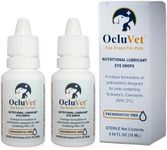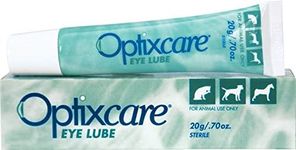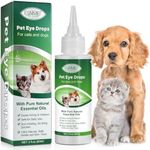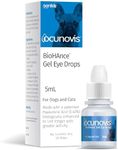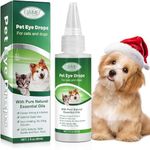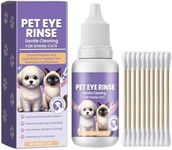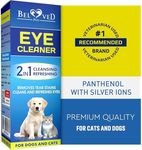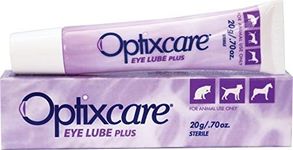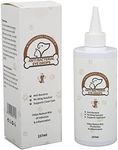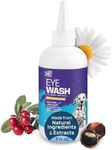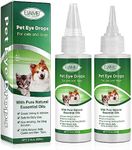Buying Guide for the Best Eye Drops For Pets
Choosing the right eye drops for your pet is important for their comfort and eye health. Pets can suffer from a variety of eye issues, such as dryness, irritation, allergies, or infections. The right product can help relieve symptoms and support healing, but it's essential to understand what each type of eye drop does and how to match it to your pet's needs. Always consult your veterinarian before starting any new treatment, as some conditions require professional care.Purpose of the Eye DropsThe purpose of the eye drops refers to what the product is designed to treat, such as dryness, allergies, infections, or cleaning. This is important because using the wrong type of eye drop can be ineffective or even harmful. Eye drops for lubrication help with dryness, while medicated drops may treat infections or inflammation. To choose the right one, first identify your pet's symptoms—redness, discharge, itching, or cloudiness—and consult your vet to confirm the underlying issue. For mild dryness or irritation, lubricating drops may be enough, but for more serious symptoms, medicated drops prescribed by a vet are necessary.
Active IngredientsActive ingredients are the substances in the eye drops that provide the intended effect, such as soothing, cleaning, or fighting infection. This is important because some ingredients are safe for pets, while others are not. For example, saline is gentle and safe for cleaning, while antibiotics or steroids are used for specific medical conditions. When comparing products, look for ingredients that match your pet's needs and avoid anything not recommended by your vet. If your pet has allergies or sensitivities, choose drops with minimal, gentle ingredients.
Formulation (Preservative-Free vs. Preserved)Formulation refers to whether the eye drops contain preservatives to prevent contamination. Preservative-free drops are gentler and better for pets with sensitive eyes or those needing frequent application, while preserved drops last longer after opening but may cause irritation with long-term use. If your pet needs drops often or has a history of eye sensitivity, preservative-free is usually the safer choice. For occasional use, preserved drops may be more convenient.
Ease of ApplicationEase of application describes how simple it is to use the eye drops on your pet. This matters because pets can be squirmy or anxious during treatment. Some drops come in bottles with easy-to-use nozzles, while others may be thicker gels that stay in the eye longer. If your pet is difficult to handle, look for drops with a user-friendly applicator or a formula that requires fewer applications per day. Consider your comfort and your pet's temperament when making your choice.
Suitability for SpeciesSuitability for species means whether the eye drops are safe for the type of pet you have, such as dogs, cats, or other animals. This is crucial because some ingredients safe for one species can be harmful to another. Always check the label to ensure the product is intended for your pet's species, and never use human eye drops unless specifically directed by your veterinarian. If you have multiple types of pets, make sure the drops are safe for all of them if you plan to use the same product.
